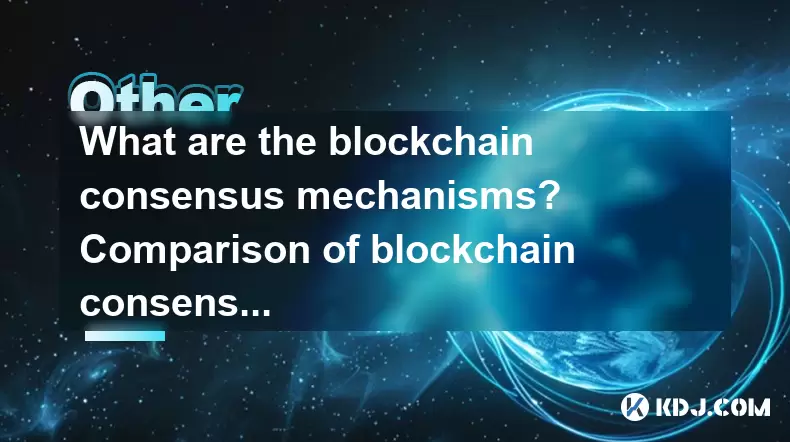-
 Bitcoin
Bitcoin $115200
-2.59% -
 Ethereum
Ethereum $3610
-4.80% -
 XRP
XRP $3.046
-1.70% -
 Tether USDt
Tether USDt $0.9997
-0.01% -
 BNB
BNB $762.6
-4.64% -
 Solana
Solana $168.7
-4.80% -
 USDC
USDC $0.9998
0.00% -
 Dogecoin
Dogecoin $0.2091
-4.05% -
 TRON
TRON $0.3270
-0.48% -
 Cardano
Cardano $0.7335
-3.72% -
 Hyperliquid
Hyperliquid $39.29
-10.55% -
 Stellar
Stellar $0.3999
-2.50% -
 Sui
Sui $3.542
-5.88% -
 Chainlink
Chainlink $16.62
-5.12% -
 Bitcoin Cash
Bitcoin Cash $551.5
-3.74% -
 Hedera
Hedera $0.2544
-3.06% -
 Avalanche
Avalanche $22.11
-4.29% -
 Ethena USDe
Ethena USDe $1.001
0.00% -
 Toncoin
Toncoin $3.523
-1.18% -
 UNUS SED LEO
UNUS SED LEO $8.939
-0.13% -
 Litecoin
Litecoin $106.3
-2.77% -
 Shiba Inu
Shiba Inu $0.00001235
-3.83% -
 Polkadot
Polkadot $3.647
-3.93% -
 Uniswap
Uniswap $9.071
-6.41% -
 Monero
Monero $301.6
-0.77% -
 Dai
Dai $0.0000
-0.01% -
 Bitget Token
Bitget Token $4.331
-3.46% -
 Pepe
Pepe $0.00001064
-5.31% -
 Cronos
Cronos $0.1367
-5.05% -
 Aave
Aave $259.2
-3.66%
What are the blockchain consensus mechanisms? Comparison of blockchain consensus mechanisms
A blockchain consensus mechanism ensures agreement among nodes, maintaining security and trust without a central authority.
Jun 14, 2025 at 03:29 pm

What is a Blockchain Consensus Mechanism?
A blockchain consensus mechanism is a fault-tolerant system used in blockchain networks to achieve agreement on a single data value or network state among distributed nodes. Since blockchains are decentralized, there is no central authority to validate transactions or blocks. Instead, these mechanisms ensure that all participants agree on the validity of transactions and maintain trust across the network.
In a blockchain context, consensus ensures security, immutability, and decentralization. Without it, double-spending, fraud, and other malicious activities could compromise the integrity of the entire system. Different types of blockchains—public, private, and consortium—use various consensus methods depending on their goals and infrastructure.
Proof of Work (PoW): The Pioneer of Consensus
Proof of Work (PoW) was the first consensus algorithm introduced by Bitcoin. It requires miners to solve complex mathematical puzzles to validate transactions and create new blocks. The first miner to solve the puzzle gets the right to add the block and receive rewards.
- Miners compete using computational power.
- High energy consumption is a major drawback.
- Security is strong due to high cost of potential attacks.
PoW is known for its robustness, but it has scalability issues and environmental concerns due to excessive electricity usage. Ethereum initially used PoW before transitioning to Proof of Stake.
Proof of Stake (PoS): A Greener Alternative
Proof of Stake (PoS) selects validators based on the number of coins they hold and are willing to "stake" as collateral. Validators are chosen to create new blocks proportionally to their stake, reducing energy consumption compared to PoW.
- Validators lock up cryptocurrency as a guarantee of honest behavior.
- Rewards are given for validating legitimate transactions.
- Slashing penalties apply if dishonest behavior is detected.
Ethereum 2.0 adopted PoS through the Beacon Chain upgrade, significantly lowering energy requirements while maintaining network security. However, critics argue that PoS may favor wealthy stakeholders, potentially leading to centralization.
Delegated Proof of Stake (DPoS): Faster Consensus with Voting
Delegated Proof of Stake (DPoS) builds upon PoS by introducing a voting system where stakeholders elect a limited number of delegates or witnesses to validate transactions and produce blocks.
- Token holders vote for delegates proportional to their stake.
- Delegates rotate regularly to maintain fairness and efficiency.
- Transactions are confirmed faster than in traditional PoS systems.
DPoS is known for high throughput and scalability, making it suitable for platforms like EOS and TRON. However, it sacrifices some decentralization since only a few nodes are responsible for consensus at any given time.
Proof of Authority (PoA): Trust-Based Validation
Proof of Authority (PoA) relies on approved, reputable identities to validate transactions. Instead of staking coins, validators stake their reputation. This consensus model is commonly used in private or consortium blockchains.
- Identity verification is mandatory for validators.
- Block creation is fast and efficient.
- Centralized control makes it unsuitable for fully decentralized public chains.
PoA is ideal for enterprise applications, where performance and identity validation are more critical than full decentralization. Microsoft’s Azure and VeChain utilize PoA-based models for their blockchain solutions.
Practical Byzantine Fault Tolerance (PBFT): Resilient to Malicious Nodes
Practical Byzantine Fault Tolerance (PBFT) focuses on achieving consensus even when some nodes behave maliciously. It's widely used in permissioned blockchains where the number of nodes is limited and known.
- Each node communicates with others to reach agreement.
- Finality is achieved quickly with minimal delay.
- Scalability decreases as the number of nodes increases.
Hyperledger Fabric employs PBFT or its variants, ensuring high transaction finality and reliability. While secure and fast, PBFT becomes inefficient in large-scale decentralized environments.
Frequently Asked Questions
Q: Which consensus mechanism is the most secure?
A: Proof of Work (PoW) is considered highly secure due to the immense computational effort required to launch an attack. However, newer mechanisms like PoS with proper slashing conditions can also provide robust security.
Q: Can a blockchain switch from one consensus mechanism to another?
A: Yes, several blockchains have transitioned successfully. For example, Ethereum moved from PoW to PoS during its Ethereum 2.0 upgrade to improve scalability and reduce energy consumption.
Q: Why do different blockchains use different consensus mechanisms?
A: Each mechanism serves different purposes such as scalability, energy efficiency, decentralization level, and governance structure. Choosing a consensus method depends on the specific use case and design philosophy of the blockchain.
Q: Are hybrid consensus models becoming popular?
A: Yes, hybrid models combine elements of multiple mechanisms to balance security, speed, and decentralization. For instance, some projects use PoW for initial mining and PoS for finality or governance.
Disclaimer:info@kdj.com
The information provided is not trading advice. kdj.com does not assume any responsibility for any investments made based on the information provided in this article. Cryptocurrencies are highly volatile and it is highly recommended that you invest with caution after thorough research!
If you believe that the content used on this website infringes your copyright, please contact us immediately (info@kdj.com) and we will delete it promptly.
- SPX6900, BlockDAG, and Miner Sales: A New York Minute on Crypto Trends
- 2025-08-01 23:30:15
- BlackRock, XRP ETF, and Ripple: Is the Perfect Storm Brewing?
- 2025-08-01 22:50:11
- Dogecoin's Bullish Engulfing Pattern: Is a Major Price Move Imminent?
- 2025-08-01 22:30:12
- Score Big with bet365 Bonus Code BOOKIES: Your Ticket to NFL, MLB, and WNBA Action!
- 2025-08-01 22:30:12
- SportsMillions Promo Code & Bonus: Your Ticket to Social Sports Action
- 2025-08-01 22:50:11
- BetMGM Bonus Code BOOKIES: Your Ticket to NFL, MLB & WNBA Action (and More!)
- 2025-08-01 22:55:54
Related knowledge

What is the difference between a blockchain and a database?
Aug 01,2025 at 09:36pm
Understanding the Core Structure of a BlockchainA blockchain is a decentralized digital ledger that records data in a series of immutable blocks linke...

How to start a business using blockchain?
Jul 28,2025 at 12:36am
Understanding the Basics of Blockchain TechnologyBefore diving into the process of starting a business using blockchain, it's crucial to understand wh...

What is a token on the blockchain?
Jul 21,2025 at 07:00am
Understanding the Concept of a TokenIn the realm of blockchain technology, a token is a digital representation of an asset or utility that exists on a...

Can blockchain be used for identity verification?
Jul 18,2025 at 02:14pm
Understanding Identity Verification in the Digital AgeIn the modern digital landscape, identity verification has become a critical component for ensur...

What is a consensus mechanism in blockchain?
Jul 21,2025 at 03:01am
Understanding the Basics of Consensus MechanismsA consensus mechanism is a critical component of any blockchain network. It refers to the process by w...

How to explain blockchain to someone with no tech background?
Jul 18,2025 at 11:08pm
Understanding the Basics of BlockchainTo explain blockchain to someone with no tech background, it's essential to start with simple analogies and avoi...

What is the difference between a blockchain and a database?
Aug 01,2025 at 09:36pm
Understanding the Core Structure of a BlockchainA blockchain is a decentralized digital ledger that records data in a series of immutable blocks linke...

How to start a business using blockchain?
Jul 28,2025 at 12:36am
Understanding the Basics of Blockchain TechnologyBefore diving into the process of starting a business using blockchain, it's crucial to understand wh...

What is a token on the blockchain?
Jul 21,2025 at 07:00am
Understanding the Concept of a TokenIn the realm of blockchain technology, a token is a digital representation of an asset or utility that exists on a...

Can blockchain be used for identity verification?
Jul 18,2025 at 02:14pm
Understanding Identity Verification in the Digital AgeIn the modern digital landscape, identity verification has become a critical component for ensur...

What is a consensus mechanism in blockchain?
Jul 21,2025 at 03:01am
Understanding the Basics of Consensus MechanismsA consensus mechanism is a critical component of any blockchain network. It refers to the process by w...

How to explain blockchain to someone with no tech background?
Jul 18,2025 at 11:08pm
Understanding the Basics of BlockchainTo explain blockchain to someone with no tech background, it's essential to start with simple analogies and avoi...
See all articles

























































































